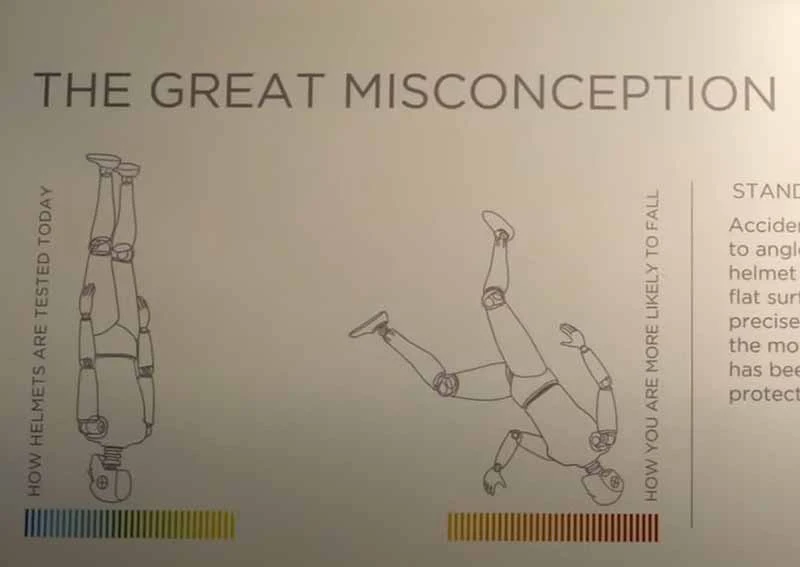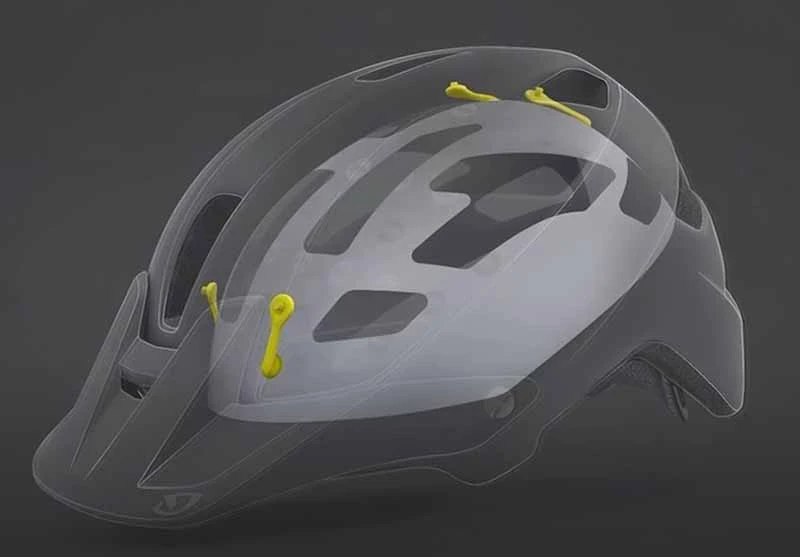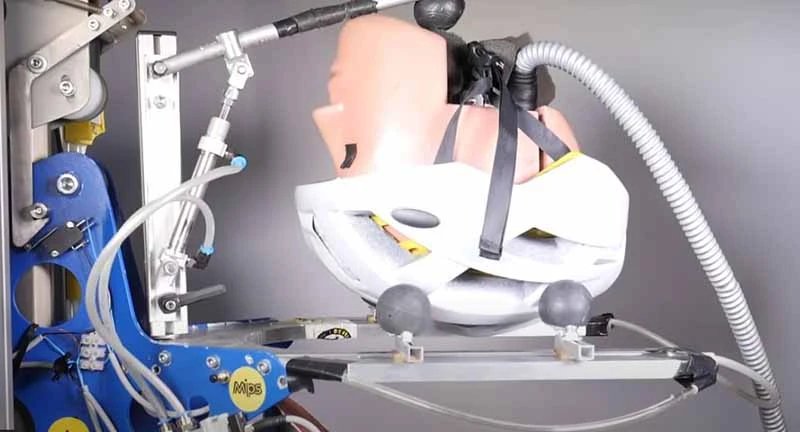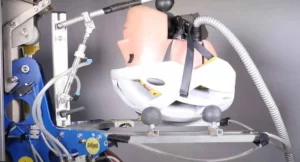If you have been shopping for a helmet recently, there is a high chance you have seen MIPS-equipped helmets. They are recognizable from the small yellow dot found outside and have a yellow liner on the inside.
But why is there a widespread adoption of MIPS technology in helmets? Why is everyone into MIPS helmets? In this article, I will talk about MIPS helmets and brain injuries. Keep reading the article to get well-detailed information. Let’s dive in!
What is MIPS Helmet Technology?

MIPS means Multi-directional Impact Protection System. MIP helmets have slip-plane technology that helps reduce the rotational forces that result from various impacts. Scientists and brain surgeons developed MIPS technology to mitigate the effects of rotational forces on your brain.
The angle of impact on the head determines the injuries that will occur to your brain. Moreover, the MIP technology has a friction layer between the helmet liner and the EPS foam. It also allows a sliding motion of ten to fifteen millimeters in all directions. The primary purpose of the friction layer is to minimize the transfer of rotational forces to your brain.
Straight-on and linear impacts lead to bleeding and skull fractures. MIPS studies show that rotational impacts lead to traumatic brain injuries and concussions. Moreover, MIPS technology is used in making construction, motorbike, equestrian, and cycling helmets.
How Does MIPS Work?

The MIPS helmet uses a moving layer that protects your brain from rotational impacts. At the helmet’s core, the MIPS technology imitates your head’s protective structure. Furthermore, there is a cerebrospinal fluid between your brain and skull. It allows your brain to move or slide in your head.
The movement or sliding of the brain protects it from rotational impacts caused by oblique forces. Moreover, unlike other helmets, MIPS helmets protect your brain from linear and rotational forces.
When you fall from a bike and your head has a MIPS helmet, there is a slim chance that you will be exposed to linear forces and rotational forces. It is because the MIPS technology counteracts the rotational impacts.
When you fall, there is a horizontal speed forward movement and impact on the ground. During impact, there will be a tangential force that will make your head and helmet rotate. By doing this, the MIPS technology mimics having a fall on the ice. Instead of your head grabbing the ground and rotating, you will slide and continue moving in the previous direction.
By having a sliding layer inside the helmet, the brain and the head have a good chance of remaining in a linear direction when the impact happens. As compared to exposing your head to rotational forces.
The time frame in which the helmet can help prevent injury to the brain is slim. The duration of impact usually is five to ten milliseconds. During this short period, the acceleration of your head and force are relatively high. It is more like having more than ten people stand in your head. The MIPS technology allows the movement of your head despite the great amount of stress and pressure applied.
You May Also Like:
Bio David Thom Motorcycle Helmet Expert
Motorcycle Helmet Laws by State in the US
US Motorcycle Helmet Standard: DOT, ECE 22.5
Is It Really Worth It?
Yes, the MIPS helmets are worth every penny. These helmets are designed to reduce linear and rotational forces’ effects on your head to protect your brain from damage. The MIPS helmets help to prevent the effect of rotational impact by 10%
Therefore, you can be confident enough that when purchasing this helmet, you will have reduced the risk of brain injury and concussions. The other helmets out there offer protection to your head but only against linear forces.
The helmets that have MIPS technology are the best. You can be sure that in case of an injury to your head with this helmet, you stand a high chance of zero brain injuries. Furthermore, the MIPS helmets have successfully reduced brain trauma risk by 45%.
Why Are MIPS Helmets Better?

The MIPS helmets are better because they have excellent strain reduction, unlike the regular helmets that do not have MIPS technology. The MIPS technology uses dummy heads to measure the strain from an impact. The dummy heads have the same kinematics as the human head and are fitted with accelerometers.
MIPS Helmet Versus Normal Helmet
The MIPS helmet outshines the normal helmet in every aspect. The MIPS helmet uses MIPS technology, making it an improved version of the normal helmet. The difference between these two helmets includes:
- The MIPS helmet is expensive compared to the normal helmet.
- The MIPS helmet offers protection against linear and rotational forces, whereas the normal helmet offers protection against linear forces.
- The MIPS helmet is heavy compared to the normal helmet, which is a bit light.
- The MIPS helmet has better insulation, allowing it to retain more heat than the normal helmet.
What Is a Rotational Impact?
It is an injury that results from a rapid change of the head rotational velocity. This rapid change is caused by an indirect hit to your shoulder or a direct hit to your skull or helmet. Moreover, linear acceleration injuries are caused by forces that stretch the brain in the skull, while rotational acceleration injuries are caused by forces that shear and twist the brain.
What Are Three Types of Brain Injuries?

1. Traumatic Brain Injuries:
These injuries are caused by forces that affect the functions of the brain. These injuries are associated with physical assaults, falls, and sports-related and vehicle accidents. Traumatic brain injuries include concussion, edema, hematoma, skull fracture, and diffuse axonal injury.
2. Non-Traumatic Acquired Brain Injuries:
These injuries are caused by internal agents such as toxin exposure, having a tumor, and loss of oxygen. Examples of non-traumatic acquired brain injuries include stroke, hemorrhage, and anoxic/hypoxic brain injury.
3. Rotational Injuries
These are injuries that result from the tearing and shearing of the brain tissue. Rotational injuries include diffuse axonal injury, angular acceleration injury, and rotational brain injury.
What Are the Types of Traumatic Brain Injuries?
1. Primary Injury:
These are injuries sustained during a traumatic event. They include intracranial hematoma, diffuse axonal injury, contusions, and skull fractures.
2. Secondary Injury:
These are changes that manifest after days or hours after the primary injury. It involves stages or steps of blood vessels, tissue, and chemical or cellular changes that lead to the destruction of your brain tissues. Secondary brain injury includes ischemia, hypoxia, hydrocephalus, and cerebral edema.
What Is the Most Common Type of Primary Traumatic Brain Injury?
A brain concussion is the most common primary traumatic brain injury. Studies have found it as the most commonly reported primary injury in emergency hospital visits.
Conclusion: Motorcycle Helmet MIPS Technology
In conclusion, a MIPS helmet reduces the risk of brain injury. The helmet is well designed and includes all aspects of safety and comfort. Moreover, brain injuries can be a health menace and your brain might stop functioning. Therefore, it is important to be careful and keep in mind that the body cannot function without the brain. The safety of your head is paramount.
M/HW













